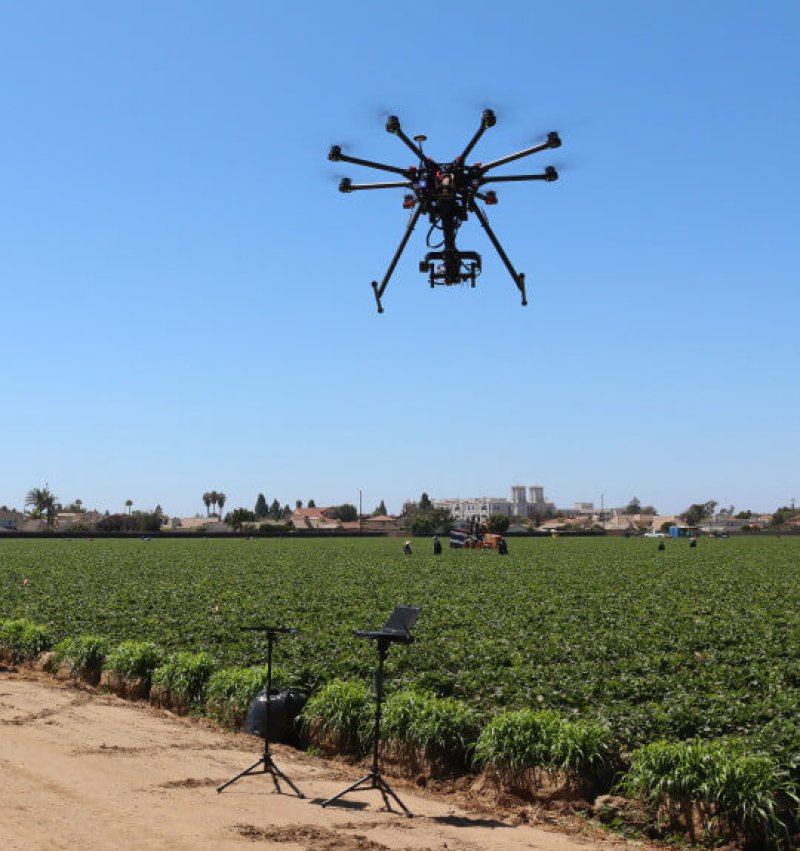In Santa Monica, Calif., researchers flew drones with light-sensitive cameras over a strawberry field to locate pest-damaged plants. Armed with a map of leaf reflectance patterns, they deployed drones loaded with predatory bugs to spot treat the field.
“Our goal is to eliminate the pests,” said Zhaodan Kong, a UC Davis professor of mechanical and aerospace engineering …. “We [use] sensors to detect the problem, and then do something to achieve the goal.”
To find insect outbreaks, a drone equipped with a hyperspectral camera flies over the field and senses light reflected from the plants.
“If plants are healthy, they absorb a lot of sunlight for photosynthesis, but if they are less healthy from insect or drought stress, they reflect light in a different pattern,” said Elvira de Lange, a postdoctoral researcher in the department of entomology and nematology. “We can look at these differences and determine which plants need a little bit of extra care.”
Light reflectance data from the sensing drone informs the second part of the process. Another drone then delivers predatory mites directly to the infested plants. The mites are natural predators of agricultural pests and are an eco-friendly alternative to spraying pesticide.































